Nara, Japan’s first permanent capital, is a city rich in cultural heritage, home to some of Japan’s most significant historical sites and natural beauty. Just a short train ride from Kyoto and Osaka, Nara offers a blend of majestic temples, traditional gardens, and unique experiences—most famously, the friendly deer that roam freely in Nara Park. Whether you’re a history enthusiast, a nature lover, or simply seeking a peaceful retreat, Nara provides an unforgettable cultural journey.
1. Todaiji Temple – Home of the Great Buddha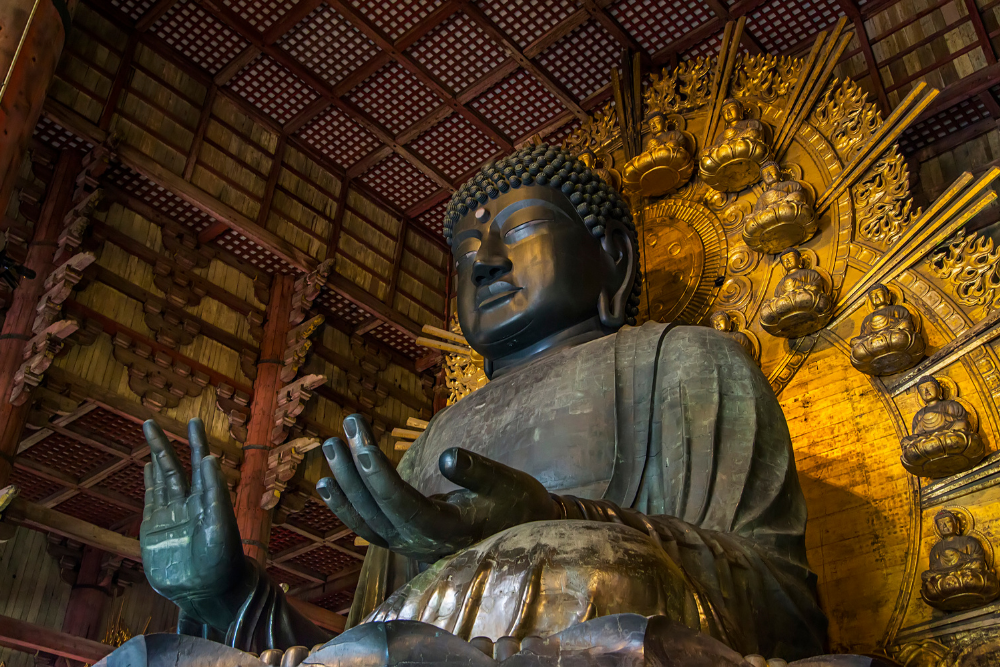
Todaiji Temple is Nara’s most iconic landmark, housing the world’s largest bronze Buddha statue inside Daibutsuden (Great Buddha Hall), one of the largest wooden structures in the world. Built in 752, Todaiji served as the head temple of Japan’s Buddhist temples during the Nara period.
Highlights:
- The Great Buddha (Daibutsu) – A 15-meter-tall bronze statue representing Vairocana Buddha.
- Nandaimon Gate – The temple’s impressive entrance, guarded by two fierce wooden Nio statues.
- Pillar of Enlightenment – A wooden column with a hole at its base said to be the same size as the Daibutsu’s nostril. Crawling through it is believed to bring enlightenment.
Tip: Visit early in the morning to avoid crowds and fully appreciate the temple’s peaceful ambiance.
2. Nara Park – Meet the Sacred Deer
Spanning over 500 hectares, Nara Park is home to more than 1,000 freely roaming deer, which are considered sacred messengers of Shinto deities. These deer are friendly and will bow in exchange for shika senbei (deer crackers), which can be purchased from vendors around the park.
Highlights:
- Interacting with the Deer – Experience the unique tradition of feeding and bowing with the deer.
- Scenic Strolls – Enjoy picturesque walks surrounded by nature, with cherry blossoms in spring and vibrant foliage in autumn.
- Proximity to Major Attractions – Todaiji Temple, Kasuga Taisha, and Kofukuji Temple are all within the park.
Tip: While the deer are usually gentle, they can be persistent if they smell food. Be mindful of your belongings!
3. Kasuga Taisha – Nara’s Grand Shinto Shrine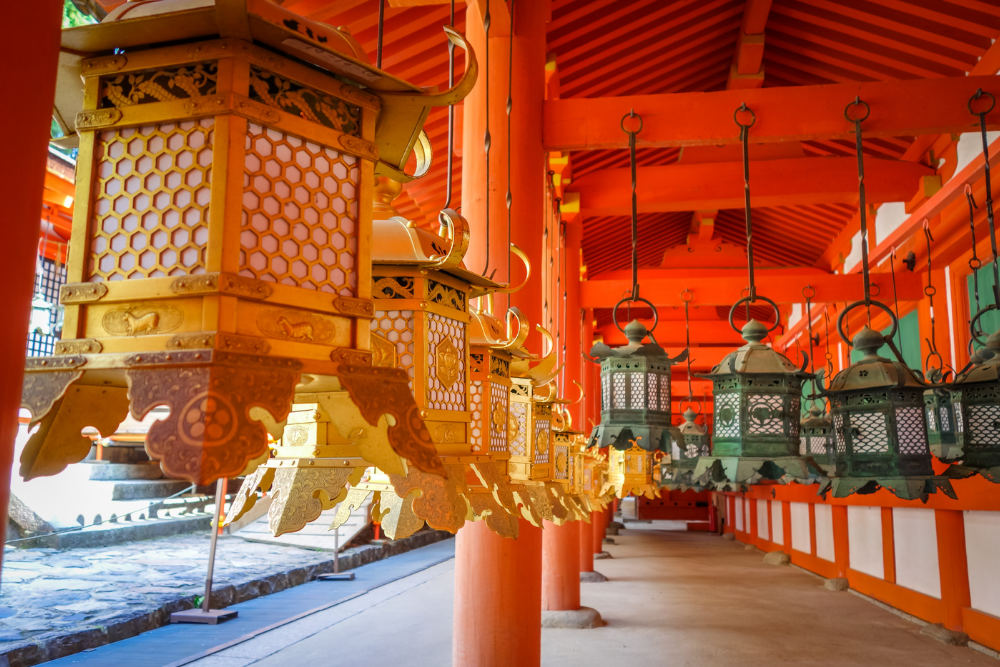
Nestled in the forest at the edge of Nara Park, Kasuga Taisha is Nara’s most important Shinto shrine, famous for its thousands of bronze and stone lanterns. Founded in 768, the shrine is dedicated to the deities of the Fujiwara clan, one of Japan’s most powerful aristocratic families.
Highlights:
- Lantern Festivals – During the Setsubun Mantoro (February) and Obon Mantoro (August) festivals, over 3,000 lanterns are lit, creating a magical atmosphere.
- Kasuga Primeval Forest – A sacred forest behind the shrine, untouched for centuries and a designated UNESCO World Heritage site.
- Shinen Manyo Botanical Garden – A garden featuring over 300 plant species mentioned in the Manyoshu, Japan’s oldest poetry collection.
Tip: For a quieter experience, explore the scenic paths leading to the smaller auxiliary shrines hidden in the surrounding forest.
4. Kofukuji Temple – A Pagoda with History
Kofukuji, originally built in 669, was the family temple of the influential Fujiwara clan. Its striking five-story pagoda, Japan’s second tallest, dominates Nara’s skyline.
Highlights:
- Five-Story Pagoda – One of Nara’s most recognizable structures.
- Tokondo Hall – Home to an impressive collection of Buddhist statues.
- National Treasure Museum – Showcasing priceless Buddhist artifacts, including the famous Ashura statue.
Tip: The temple grounds are free to explore, but entrance fees apply to the museum and main halls.
5. Horyuji Temple – One of the World’s Oldest Wooden Structures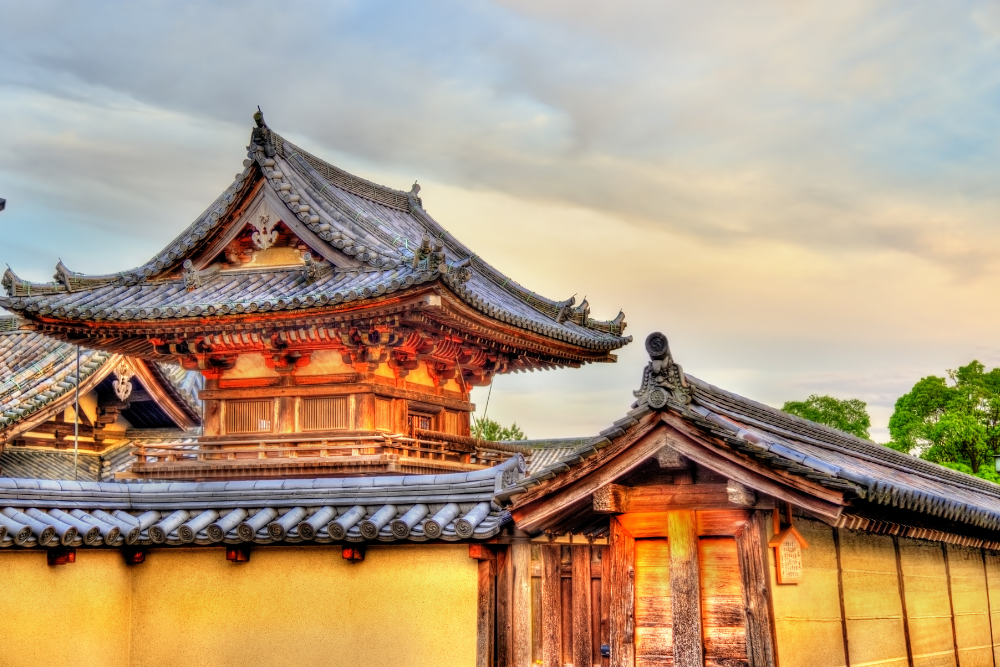
Located slightly outside central Nara, Horyuji Temple is one of Japan’s most historically significant temples and a UNESCO World Heritage site. Founded in 607 by Prince Shotoku, it houses some of the world’s oldest surviving wooden buildings.
Highlights:
- Five-Story Pagoda – One of the oldest wooden buildings in the world.
- Yumedono (Hall of Dreams) – A unique octagonal hall with a revered statue of Prince Shotoku.
- Treasure Hall – A collection of Buddhist relics and artifacts from the Asuka and Nara periods.
Tip: Horyuji is slightly outside Nara’s main tourist area, so consider taking a train or bus for convenience.
6. Isuien Garden – A Tranquil Oasis
Isuien Garden is a beautiful Japanese garden featuring ponds, stone lanterns, and meticulously maintained landscapes. It’s one of the best places in Nara to experience traditional Japanese aesthetics.
Highlights:
- Borrowed Scenery (Shakkei) – The garden’s design incorporates the natural beauty of the distant mountains and Todaiji Temple’s Great Buddha Hall.
- Tea House – Experience traditional Japanese tea in a serene setting.
- Neiraku Museum – A small museum displaying antique ceramics and historical artifacts.
Tip: The garden is less crowded than Nara’s major temples, making it a perfect spot for a peaceful break.
7. Yoshikien Garden – Free for Foreign Visitors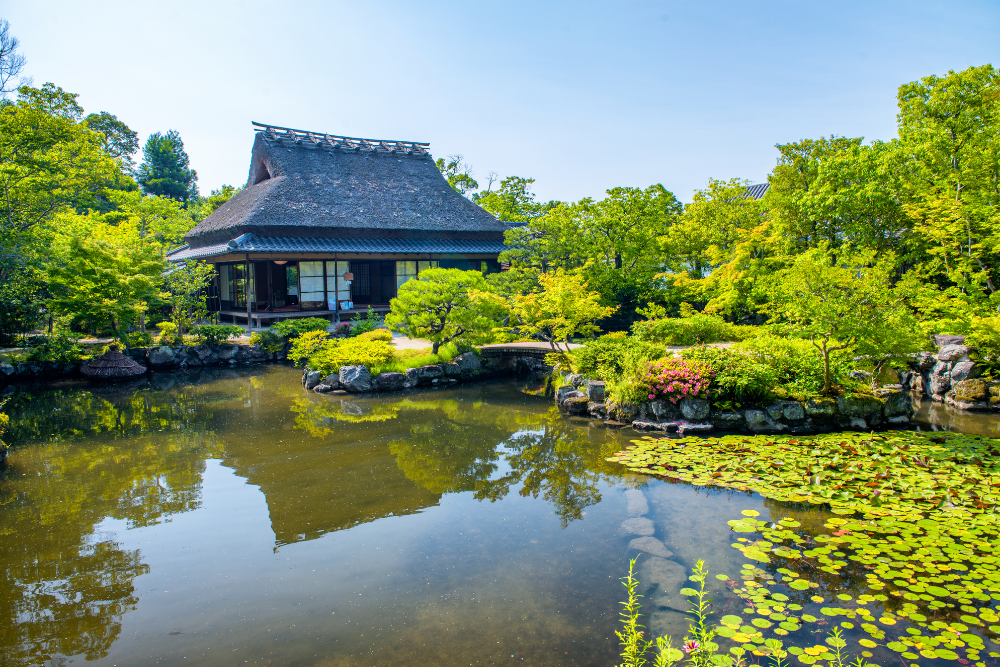
Located near Isuien Garden, Yoshikien offers a traditional Japanese garden experience with a pond garden, moss garden, and tea ceremony garden. The best part? It’s free for foreign visitors!
Highlights:
- Three Unique Garden Styles – Each section of the garden represents different aspects of traditional Japanese landscaping.
- Peaceful Atmosphere – A great place to relax away from the tourist crowds.
Tip: Since it’s free for international visitors, it’s worth stopping by even if you have limited time.
8. Naramachi – Explore Old Nara
Naramachi is Nara’s former merchant district, featuring traditional townhouses, boutique shops, and small museums. Walking through its narrow streets gives visitors a glimpse into Nara’s Edo-period past.
Highlights:
- Nigiwai-no-Ie – A preserved machiya (traditional townhouse) open to the public.
- Gangoji Temple – One of Japan’s oldest temples, with rustic charm.
- Local Shops & Cafés – Perfect for finding handmade crafts, Japanese sweets, and small souvenirs.
Tip: Try kuzumochi, a jelly-like sweet made from arrowroot starch, a Nara specialty.
9. Mount Wakakusa – A Scenic Hike with Stunning Views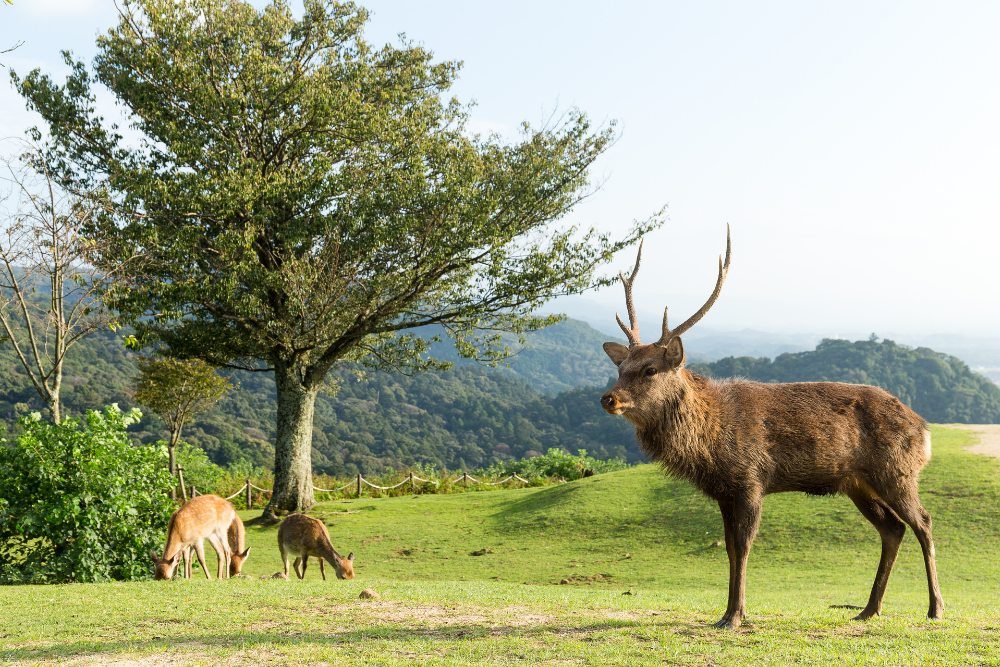
Mount Wakakusa is a small mountain offering panoramic views of Nara and its temples. A short hike to the summit rewards visitors with breathtaking scenery, especially during cherry blossom season and autumn.
Highlights:
- Wakakusa Yamayaki Festival (January) – The mountain is set ablaze in a spectacular fire festival, followed by fireworks.
- Great Views – Perfect for photographers looking to capture Nara from above.
Tip: The best time to visit is just before sunset for a golden-hour view over Nara.
Conclusion
Nara is a cultural gem that offers a deep dive into Japan’s ancient past, with its historic temples, lush gardens, and sacred deer adding to its charm. Whether you’re admiring the towering Buddha at Todaiji, strolling through the lantern-lit paths of Kasuga Taisha, or feeding the deer in Nara Park, every moment in Nara is a blend of history, spirituality, and natural beauty.
With its relaxed atmosphere and cultural richness, Nara is more than just a day-trip destination—it’s a place to slow down, explore, and immerse yourself in Japan’s timeless traditions.












